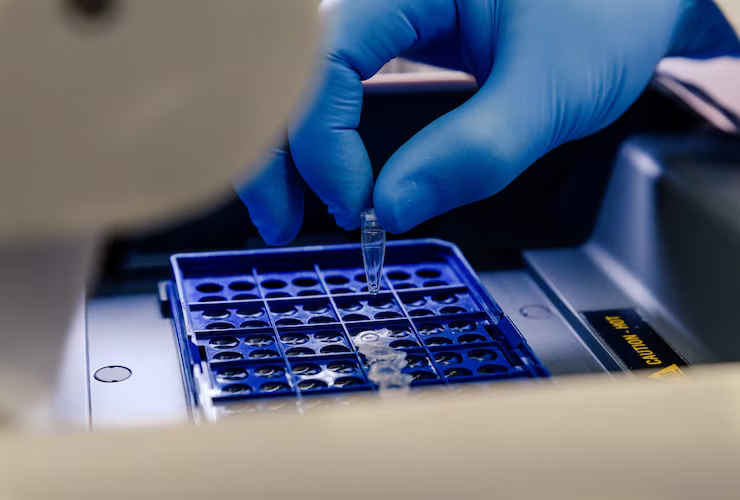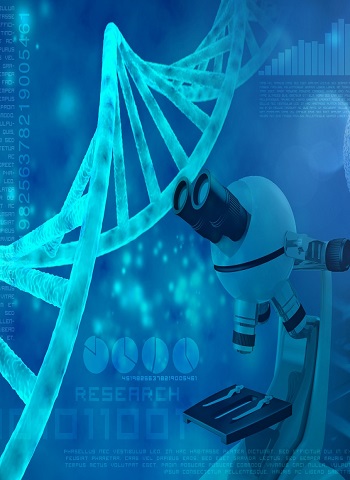In the realm of modern science and medical research, ELISA stands tall as a powerful tool in diagnostic and analytical applications. Enzyme-Linked Immunosorbent Assay, commonly known as ELISA, plays a pivotal role in detecting and quantifying specific substances, such as antibodies, antigens, and proteins. In this blog, we will explore the fundamental principles, advantages, and disadvantages of ELISA, delve into the various types, understand the intricacies of how this technique works, and discuss its significant applications.
What is an ELISA?
Enzyme-Linked Immunosorbent Assay (ELISA) is a highly sensitive and specific laboratory technique used to detect and measure a wide range of substances in biological samples. It relies on the specific interaction between an antigen and an antibody for detection and quantification. ELISA finds extensive applications in diverse fields, including clinical diagnosis, biomedical research, drug development, and food safety analysis.
Basic ELISA Principles:
At its core, ELISA relies on the principles of antigen-antibody binding, colorimetric or fluorescence detection, and quantitative analysis. The process begins with immobilizing the target antigen on a solid surface, such as a microplate. Then, specific antibodies linked to an enzyme are added, which can recognize and bind to the target antigen. After a series of washing steps to remove any unbound substances, a substrate is added that reacts with the enzyme to produce a measurable signal, such as a color change.
ELISA’s sensitivity and specificity arise from the high affinity between the antibody and antigen, allowing for precise detection even at low concentrations. This technique has been refined over the years, leading to improvements such as the use of different enzyme labels, fluorescent markers, and enhanced washing protocols to reduce background noise and increase accuracy.
How Does an ELISA Work?
- Coating: The microplate wells are coated with the target antigen to immobilize it, usually through passive adsorption or covalent binding.
- Blocking: Non-specific binding sites are blocked with inert proteins like bovine serum albumin (BSA) or casein to prevent false-positive results.
- Primary Antibody: The sample containing the primary antibody is added, which binds to the target antigen specifically.
- Washing: Excess and unbound substances are washed away to maintain accuracy and reduce background noise.
- Secondary Antibody: An enzyme-linked secondary antibody is introduced, which binds to the primary antibody, amplifying the signal.
- Signal Production: A substrate specific to the enzyme generates a detectable signal, often a color change, which is measured using a spectrophotometer or a fluorometer.
- Quantification: The intensity of the signal is measured and correlated to the concentration of the target antigen in the sample, often through a standard curve generated from known concentrations.

Applications of ELISA Kits
Enzyme-Linked Immunosorbent Assay (ELISA) has found a myriad of applications in various fields due to its sensitivity, specificity, and versatility. ELISA kits are commercially available, pre-packaged sets of reagents and microplates designed to streamline the process and make ELISA more accessible for researchers and diagnostic laboratories. Let’s explore some of the key applications of ELISA kits:
1. Clinical Diagnostics:
ELISA is extensively used in clinical laboratories for disease diagnosis and monitoring. It enables the detection of specific antibodies or antigens associated with various infectious diseases, autoimmune disorders, and allergies. For example, ELISA kits are commonly employed to diagnose HIV, hepatitis, COVID-19, and Lyme disease. Moreover, ELISA aids in measuring biomarkers to assess disease progression and treatment response, such as quantifying cardiac markers in heart conditions or cytokines in inflammatory diseases.
2. Infectious Disease Detection:
ELISA is crucial in identifying infectious agents and monitoring their prevalence in populations. It plays a pivotal role in detecting viral, bacterial, and parasitic infections by targeting specific antigens or antibodies. By using ELISA kits, healthcare professionals can quickly and accurately diagnose diseases like malaria, tuberculosis, and dengue fever, leading to prompt treatment and better disease control.
3. Food Safety Analysis:
ELISA kits are employed in the food industry to detect allergens and contaminants in food products. For instance, they can identify traces of peanuts, gluten, or seafood in processed foods, which is crucial for individuals with food allergies. Additionally, ELISA can detect toxins and pathogens in food, ensuring the safety of consumers and preventing foodborne illnesses.
4. Environmental Monitoring:
Environmental scientists use ELISA kits to assess the presence of pollutants and toxins in air, water, and soil samples. By detecting specific chemicals or substances, ELISA helps in environmental monitoring, enabling early identification of pollution and potential hazards.
5. Biomedical Research:
In research laboratories, ELISA is a fundamental tool for studying various biological processes and biomolecules. It aids in characterizing proteins, quantifying hormones and cytokines, and understanding cellular signaling pathways. ELISA plays a crucial role in drug development by measuring drug concentrations in biological samples and evaluating immune responses to potential therapeutics.
6. Veterinary Medicine:
ELISA is valuable in veterinary medicine for diagnosing infectious diseases in animals. It allows veterinarians to screen for diseases like brucellosis, parvovirus, and feline leukemia virus, leading to early treatment and prevention of disease transmission.
7. Allergy Testing:
ELISA is extensively used in allergy testing to identify specific allergens that trigger allergic reactions in patients. This information helps healthcare providers design personalized treatment plans and recommend allergen avoidance strategies.
8. Hormone Assays:
Endocrinologists utilize ELISA kits to measure hormone levels in patients. This is crucial for diagnosing hormonal disorders, monitoring hormonal therapies, and understanding the hormonal regulation of various physiological processes.
9. Cancer Biomarker Detection:
ELISA assists in cancer research by detecting specific biomarkers associated with different types of cancer. This information aids in early cancer detection, tracking disease progression, and evaluating the effectiveness of cancer treatments.
10. Veterinary Diagnostics:
ELISA kits are used in veterinary diagnostics for detecting specific diseases in animals, such as heartworm disease in dogs, feline immunodeficiency virus (FIV) in cats, and equine infectious anemia (EIA) in horses.
Conclusion:
In conclusion, ELISA is a versatile and indispensable tool in the fields of medicine, research, and diagnostics. Its ability to detect and quantify specific substances with high sensitivity and specificity has revolutionized our understanding of various diseases and biological processes. Despite some limitations, the advantages of ELISA far outweigh the disadvantages, making it an invaluable asset in the pursuit of scientific discoveries and advancements in healthcare. By adhering to the principles of antigen-antibody interaction and employing various ELISA types, researchers and scientists continue to unlock new insights into the intricate world of biomolecules, paving the way for a healthier and brighter future. As technology and methodologies evolve, ELISA remains at the forefront of cutting-edge research, contributing significantly to advancements in personalized medicine, early disease detection, and novel therapeutics.


